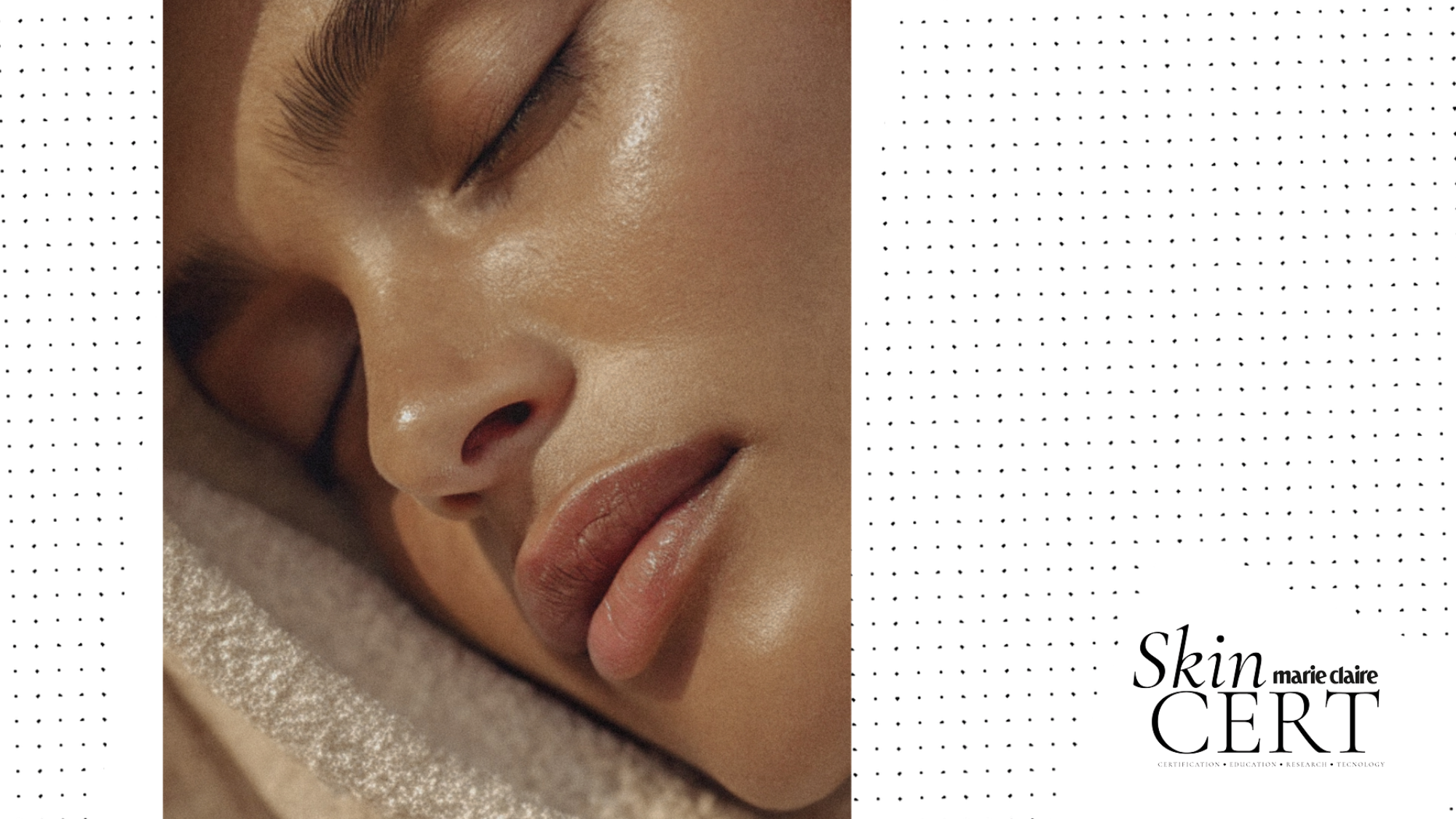Exosomes Are the Biggest Breakthrough in Regenerative Skincare for Decades—Here’s Everything You Need to Know
Plus, all the different methods of administration and modalities


If you’ve ever struggled with your skin, you’ll understand the urge of wanting to communicate with it—to understand what’s causing breakouts, and stimulate the production of collagen and elastin, post 25. Luckily, the field of regenerative aesthetics has advanced so much in recent years that we’ve found a way to do exactly that, via exosomes.
They are best described as tiny communication bubbles that our cells naturally release, akin to emails or text messages, award-winning cosmetic doctor Tony Kaliya of the Neu Clinic, tells me. “Exosomes carry messages, including growth factors, proteins and signals, that tell neighbouring cells how to repair, regenerate and behave. In skincare, we use them to encourage the skin to function in a healthier, more youthful way.” In essence, since they work at a very fundamental biological level—cell-to-cell communication—harnessing them dramatically ups the ante of what we can do for the health (and appearance) of our skin.
This goes some way to explaining why it’s taken us so long to get to this point. “Exosomes are biologically complex and isolating them safely and consistently is technically challenging,” explains Dr Kaliya. “It’s only in recent years that we’ve had the technology, regulation and manufacturing quality to produce reliable, stable, cosmetic-grade exosomes suitable for clinic use.”
And the benefits are myriad. Not only can they stimulate collagen and elastin production, but exosomes can also accelerate the healing process of damaged tissue, making them very useful post-aesthetic procedures.
As well as that, they can reduce post-inflammatory pigmentation, scarring, aid with hair loss, and treat ageing. As Dr Kaliya continues: “Stem cells are the skin’s master repair cells—they’re responsible for regeneration. As we age, our activity slows. Exosomes effectively ‘coach’ these cells back into action, encouraging them to create fresh collagen and elastin and improving the skin’s resilience. Healthy stem cell activity is the foundation of radiant, youthful-looking skin.”
Nadia Aminian, celebrity facialist and senior aesthetician at the TakTouk Clinic, adds that they are uniquely placed to promise many of the benefits of stem-cell therapies, but without the risk, as there’s no cell division. “Most natural molecules can struggle to penetrate dense tissue, exosomes, however, can cross these barriers more easily as they are small, strong and welcomed by the body. They are also easier to store in a clinic environment [usually in very cold freezers or refrigerators] and can be used for numerous concerns and skin conditions, with extremely low downtime.”
So, how are we able to use exosomes today? First popularised in South Korea, they are now becoming commonplace in clinics across the West. However, the way exosome therapy is administered varies depending on your location, and certain methods remain controversial—and illegal.
Celebrity news, beauty, fashion advice, and fascinating features, delivered straight to your inbox!
For skincare, exosomes are primarily sourced from humans, plants (including roses and pomegranates), or are animal-derived and known as "purasomes".
Cosmetic use of human-derived exosomes is banned in the UK due to concerns around safety, disease transmission and human rights abuses. And regarding administration, this is only permitted topically, often during or after treatments that create microchannels in the skin, like microneedling, laser or radiofrequency. Elsewhere, including in the USA, it is routinely performed as an injectable treatment; however, such practitioners are operating outside of FDA approval, as the Food and Drug Administration has not approved any exosome products for consumers.
While it’s currently illegal to inject any form of exosomes in the UK, practitioners like Dr Kaliya predict that it will one day become a “major” development in regenerative aesthetics. “They could deliver more targeted and powerful results, but we need clear regulation and high safety standards before that becomes a reality.”
Still, experts stress that topical use of exosomes is effective. In particular, applying exosomes to skin that has just been damaged via a microneedling or laser device makes the skin incredibly receptive to its benefits. “The product gets to the cells directly without the risk of some product being lost or evaporated on the surface,” explains Aminian.
At the TakTok clinic in Knightsbridge, they use a combination of purasomes—that is, bovine colostrum (the first milk produced by cows after giving birth), as it most resembles human cell components. However, purasomes are often mixed with plant-derived seed stem cells from fruit, including pomegranates. The clinic also uses e50, fish exosomes, which are chosen to ensure low levels of free radicals and impurities; however, all of the above are commonly selected to minimise the risk of disease transmission, which is of most concern when it comes to human-derived exosomes.
Surgical doctor, Miriam Adebibe, solely uses purasomes at her three East London clinics. She explains that their nutrient-rich combination of natural growth factors and bioactive molecules leads to unparalleled cellular communication and repair.
"Purasomes are created from bovine colostrum and deliver not only twenty billion exosomes per treatment but also twenty growth factors, cytokines, peptides, and bioactive molecules,” she explains. “This broad spectrum of active ingredients enhances skin and hair repair more comprehensively than exosomes alone. They are especially well-suited for individuals with multiple concerns such as pigmentation, inflammation, acne flare-ups, texture changes, tired or ageing skin, or hair thinning. Because they contain a larger variety of active molecules than exosomes alone, they are often the preferred option for people who want stronger all-around results or those seeking a premium treatment for both skin and scalp health."
But no matter what form of exosome therapy you choose, it's important to make sure you're a suitable candidate. While they are generally very well tolerated, experts say you should avoid treatments if you have active infections, open lesions or if you’re pregnant or breastfeeding. As a general rule, it’s encouraged to have three to six sessions spaced two to four weeks apart for skin, and six to eight sessions spaced four weeks apart for hair. It is not generally recommended for people under 25, as collagen doesn’t usually start breaking down before this age.
But exosome therapy is not the only regenerative skin treatment on the market— bio-stimulating procedures like polynucleotides—which are derived from fish DNA—offer similar results. Here, they are injected into the skin to activate fibroblast cells, by and by boosting collagen and elastin production. But there are differences, states Dr Kaliya. “Think of polynucleotides as nourishment and exosomes as direction. They’re complementary, but exosomes have a broader regenerative scope, which is why they’re generating such excitement.”

Nessa Humayun is the Beauty Editor at Marie Claire UK. With over eight years of editorial experience across lifestyle sectors, Nessa was previously the Editorial Lead of HUNGER Magazine, and has bylines in British Vogue, Dazed, and Cosmopolitan. A self-confessed human guinea pig, Nessa covers everything from product must-haves to long-reads about the industry writ large. Her beauty ethos is all about using products that work hard, so you don't have to.